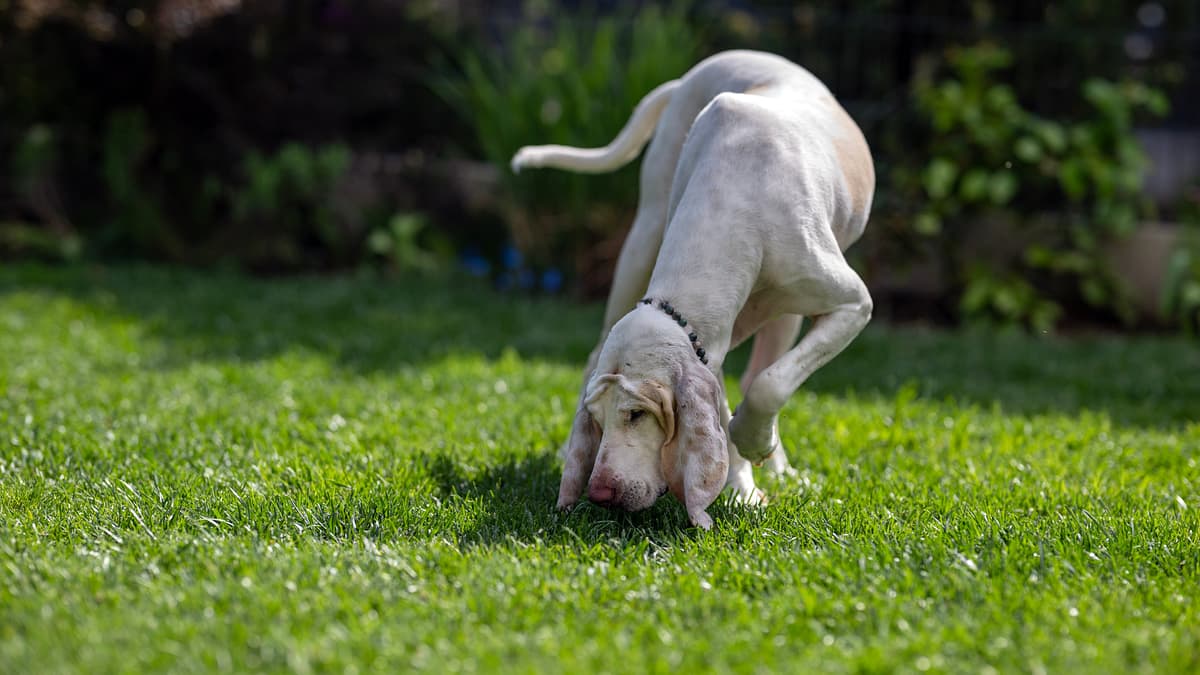Porcelaine vs Labrador Retriever
Discover the differences between Porcelaine and Labrador Retriever to make the best choice for your situation.
Try different breeds

Porcelaine
Elegant and lively, this breed is known for its porcelain-white coat and keen hunting instincts. Gentle at home, the Porcelaine thrives as an affectionate and loyal companion.

Labrador Retriever
Eager, friendly, and intelligent, this breed loves being part of an active family. Their gentle nature and loyalty make them outstanding companions for all ages.
Quick comparison
Medium
25–28 kg
Short, fine
12–13 years
23–26 kg
High energy
Large
29–36 kg
Short double coat, water-resistant
10–12 years
25–32 kg
High energy
Personality & behavior
Compare the personality traits and behavioral characteristics of both breeds.
Porcelaine
Gentle and friendly with people and dogs
Learns steadily but not highly independent
High stamina, active throughout the day
Enjoys interactive games and activities
Adjusts fairly well to new environments
Labrador Retriever
Warm and sociable with people and animals
Quick learner, responds well to training
High stamina, enjoys active pursuits daily
Loves games and interactive activities
Adjusts easily to new situations and environments
Care needs
Exercise, grooming, and daily care requirements
Porcelaine
Ear infections, hip dysplasia
Labrador Retriever
Hip dysplasia, elbow dysplasia
Suitability
How well each breed fits different living situations and families
Porcelaine
Challenging for beginners
Sensitive and energetic, they need experienced handling and consistent training
Needs more space
Porcelaines are active and vocal, requiring more room than most apartments provide
Excellent match
Their high energy suits owners who enjoy outdoor activities and regular exercise
Generally suitable
Friendly and tolerant, but supervision is advised due to their size and exuberance
Usually compatible
Social with other dogs but may chase smaller pets due to hunting instincts
Not recommended
They are prone to separation anxiety and may become destructive if left alone long
Labrador Retriever
Great choice
Patient and eager to please, Labradors are manageable for most first-time owners.
Not ideal
Labradors need space and exercise, so apartments can limit their activity needs.
Perfect fit
High energy and stamina make them excellent for active individuals or families.
Highly suitable
Gentle temperament and playful nature make them safe and loving with young children.
Very friendly
Generally sociable and get along well with other dogs and pets.
Prone to anxiety
Extended alone time can lead to boredom and destructive behaviors in this breed.
Breed strengths
What each breed excels at and their best qualities
Porcelaine
- Friendly with children and other dogs
- Strong scent-tracking ability for hunting
- Loyal and affectionate with family members
- Athletic and enjoys outdoor activities
- Generally healthy with few breed-specific issues
Labrador Retriever
- Friendly and sociable with people and dogs
- Highly trainable and eager to please
- Excellent with children and families
- Strong retrieving and swimming abilities
- Generally adaptable to various living situations
Challenges & considerations
Potential challenges and considerations for each breed
Porcelaine
- High exercise needs require daily activity
- Prone to separation anxiety if left alone
- Can be stubborn during training sessions
- May bark excessively when bored or unstimulated
- Sensitive to harsh training or correction
Labrador Retriever
- Prone to obesity without portion control
- Can become destructive if under-exercised
- Heavy seasonal shedding requires regular grooming
- May develop hip or elbow dysplasia
- Needs significant daily physical activity
Ready to choose your perfect breed?
Learn more about each breed or compare other breeds to find the perfect match for your lifestyle.
Discover more helpful tools
Make use of our other free tools to get the most out of your pet experience
